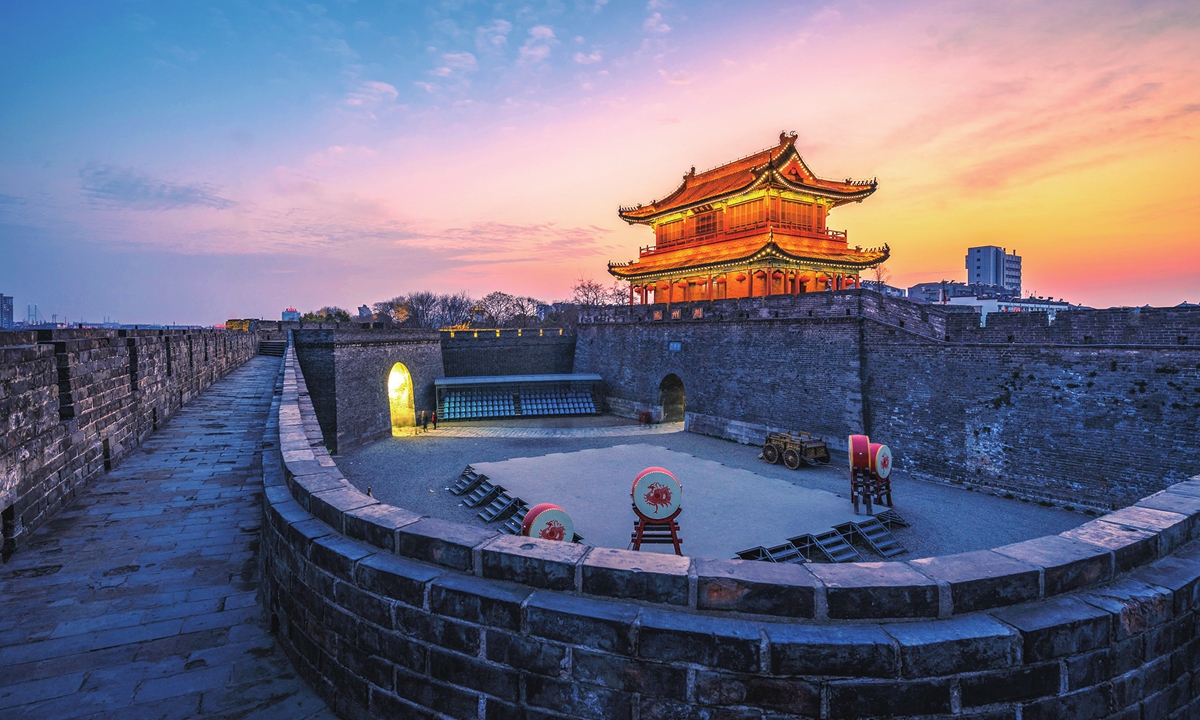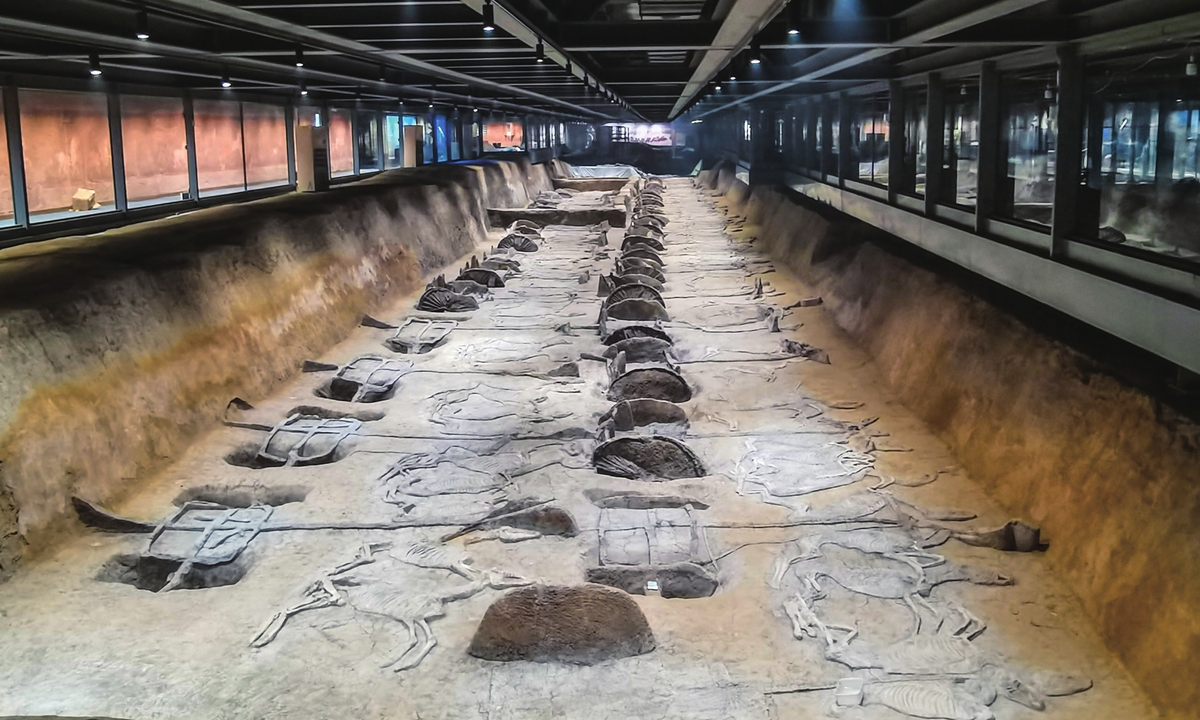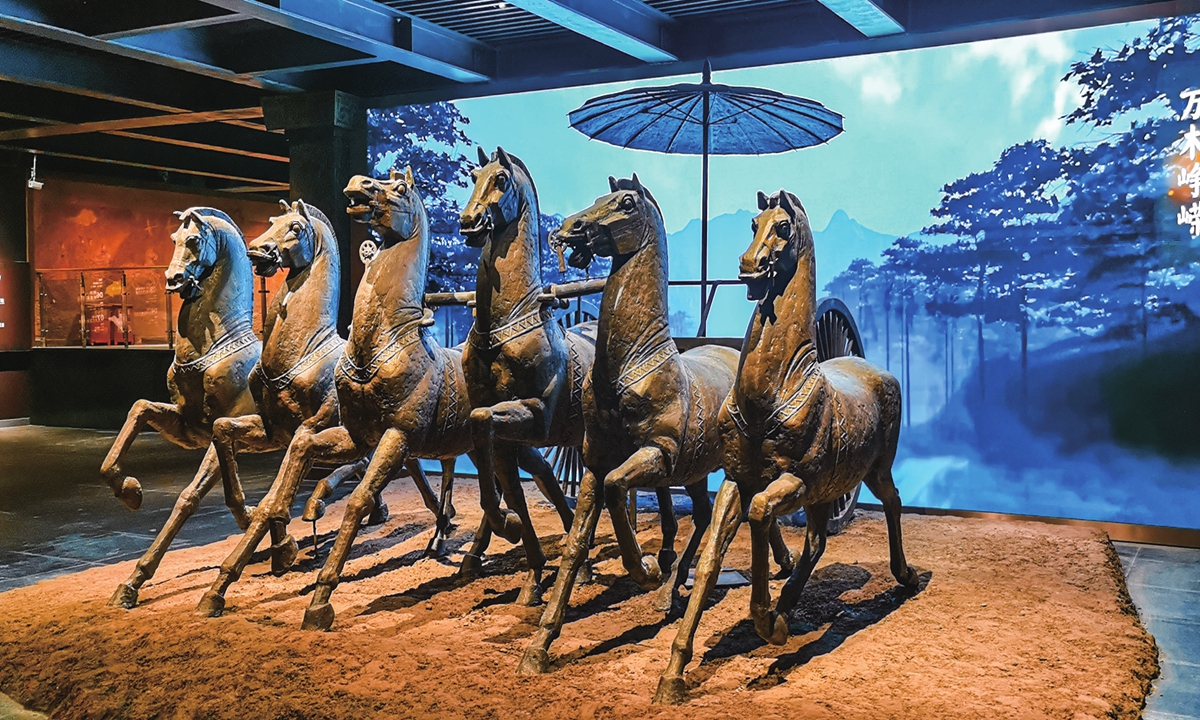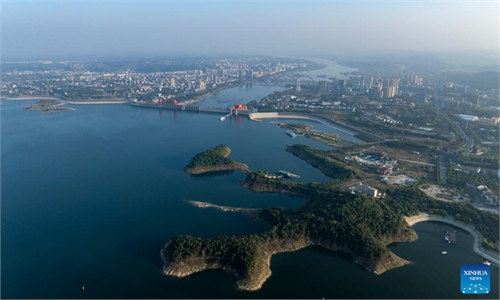ARTS / CULTURE & LEISURE
The splendor of Chu culture
Dreams of the Three Kingdoms found in Jingzhou

A view of the Jingzhou City Wall, Jingzhou, Central China's Hubei Province Photos: Courtesy of Jingzhou Cultural and Tourism Bureau
If you like classic Chinese literature, Romance of the Three Kingdoms, prepare to fall in love with Jingzhou city in Central China's Hubei Province, a living and breathing embodiment of ancient Chu culture and the legendary tales of the Three Kingdoms period (220-280AD).
On the occasion of the fourth national cultural relic census I had the good fortune to visit this charming city and I was left with a deeply positive impression.
The historical allure of Jingzhou goes beyond the grandeur of the Chu King's Mausoleum, the vast chariot horse pits that showcase the Chu state's former glory or in its well-preserved ancient city walls, which have witnessed countless changes in history. Even more fascinating are the enduring Three Kingdoms stories that have been passed down through the ages.
In Jingzhou, history is not just studied; it can be experienced firsthand. Each brick, each battlement, whispers tales of a bygone era, of the triumphs and trials that have shaped this city.

A view of the Jingzhou City Wall, Jingzhou, Central China's Hubei Province Photos: Courtesy of Jingzhou Cultural and Tourism Bureau
A majestic chariot-horse pit
Before heading to the Xiongjiazhong National Archaeological Heritage Park in Jingzhou, I had heard the saying "The Terracotta Warriors of Emperor Qinshihuang's Mausoleum stand erect in northern China, while wooden chariot military array of Chu King stands solemnly in southern China." This stirred my interest and made me wonder whether the site could truly live up to such high praise.
As I embarked on my journey to the site, I was immediately drawn to the chariot horse pits, a site that rivals the Terracotta Warriors in its grandeur.
Known as the largest, best-preserved, and highest-ranking royal tomb and chariot-horse pit from the Chu state, the scale of the chariot-horse pits is staggering, with the main pit - the No.1 chariot-horse pit - spanning 132.6 meters in length and 12 meters in width, housing an estimated 66 chariots and 258 horses. A spectacle of such magnitude is a rare sight in the world of archaeology.
Our guide, Li Wenjuan, enlightened us about the unique burial practices of the chariot horse pits. Unlike the Terracotta Warriors, the chariot horse pits here employed real chariots and horses, predating the Terracotta Warriors by over two centuries. According to Li, these horses were killed with poisoned alcohol and then buried, resulting in a more orderly and vivid arrangement characterized by a strong imagery. The horses were symmetrically placed back to back on both sides of the chariot shafts.
I was amazed that despite more than 2000 years, the skeletons of the horses are well-preserved, and the contours of the wheels, carriage bodies, and canopies are still clearly visible.
Exiting the exhibition hall, I still felt a sense of awe. Next, we took a scenic spot sightseeing vehicle that provided visitors with a virtual simulation of ancient Chu state chariots racing across the battlefield while touring the park.
The vehicle stopped beside a large tomb, which is believed to be the burial site of King Zhuang of the Chu state. According to the current cultural relics protection policy, to preserve the integrity and original state of the relics and to avoid irreversible damage from excavation, imperial tombs are not being actively excavated. Thus, from the outside, the mausoleum appears like a small hill.

Chariot and horses statue in Xiongjiazhong National Archaeological Heritage Park exhibition hall, Jingzhou
Best-preserved city wall
Jingzhou's ancient city walls are another architectural marvel that can be traced back to the Spring and Autumn period (770BC-476BC) and were rebuilt during Ming and Qing dynasties (1368-1911). It is the best-preserved ancient city wall among the prefecture cities in China, earning the reputation of a "perfect gem in the south of the Yangtze River."
We began our exploration at the Small East Gate or Gong'an Gate, a portal steeped in legend. According to chronicles, Liu Bei, a prominent warlord and statesman who played a central role in the Three Kingdoms period, often traveled by water, landed and entered Jingzhou city through the gate to check its defenses. It later became known as the "Small East Gate" or Liu Bei's defending place - Gong'an.
Ascending the walls, we were greeted by a panoramic view of the city, a vista that has remained largely unchanged for centuries. The walls, stretching for 11.28 kilometers, are a marvel of ancient architecture with their rammed earth core and brick exterior. The moat, the walls, and the ingenious "soldier-hiding holes" are a testament to the meticulous planning of ancient military defense systems.
Li Zhenggui, a local expert, explained that the city walls have been chosen to become a World Cultural Heritage site.
"China's ancient civilization is not just etched in its cities; it is the cities themselves. The walls may be structures, but they enclose the city space and carry profound symbolic value," he said.
As I strolled along the top of the walls, I was transported to a time of strategic defenses and valiant stands. The walls are more than just barriers; they are emblems of resilience, a tangible link to the historical narratives that have sculpted Jingzhou.
As the sun cast its golden hues over the venerable walls, I felt a profound connection to the souls of those who had trod these same paths and left their indelible mark in history.



